Prunus armeniaca
As a kid, I spent a few summers camping along the Columbia River in Maryhill, Washington – Yakama Nation land – where some of the best stone fruits in the world are grown.
When I think of summers there, I picture the wide brown river, warm sun on my back, and sweet, tart apricot juice dripping down my chin.
We’d buy loads of apricots, Prunus armeniaca, from Gunkel Orchards in Maryhill, and cart them all the way back home to Montana. My mom made jars of apricot jam to remind us of those sweet summer days all winter long.
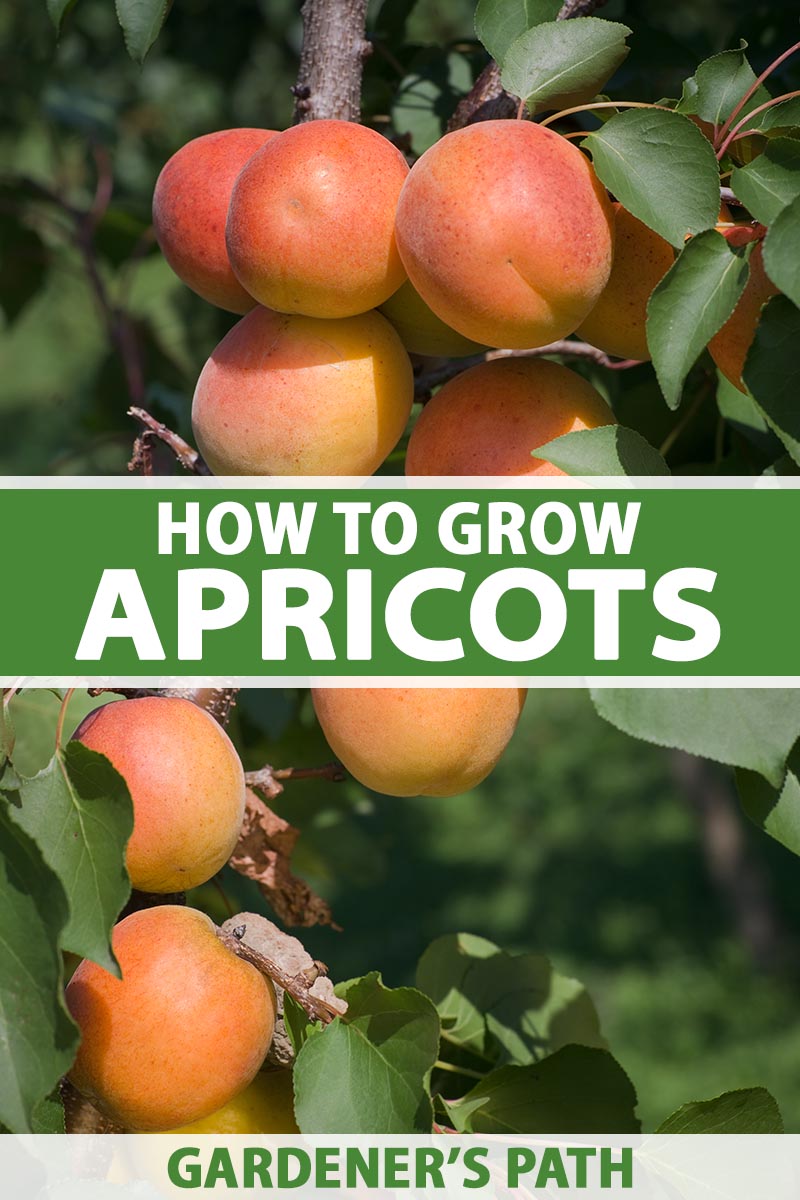
We link to vendors to help you find relevant products. If you buy from one of our links, we may earn a commission.
You may not live in a place like the Columbia River Gorge with its plentiful sunshine, but you can still grow apricot trees at home if you live in USDA Hardiness Zones 4 through 9.
And because these fruits are sometimes hard to find fresh in the grocery store since they don’t travel well, they’re an ideal addition to your home orchard.
Ready to learn more? Here’s what’s ahead:
What You’ll Learn
What Are Apricots?
Along with cherries, peaches, and plums, apricots are members of the Prunus genus in the rose family, Rosaceae. Like these sister fruits, P. armeniaca is a stone fruit, which simply means that it has a pit, or stone, in the center.
These lovely perennials can live anywhere from 40 to 150 years under ideal conditions, but they’ll probably last 10 to 35 years in your garden with appropriate care.

If an apricot tree does live to 35 or 40, you can expect it to bear fruit for 20 to 25 of those years. Trees begin bearing fruit by the time they’re three or four years old.
Each stone encases one seed, called a “kernel,” which contains a toxin called amygdalin. If eaten, hydrolyzed amygdalin releases cyanide into the body, and cyanide poisoning can result.
So leave those kernels inside the stones and dispose of them out of reach of children or pets!
Some apricot varieties are called “clingstone” fruits, indicating that the pit is attached to the flesh. “Freestone” fruits, on the other hand, feature pits that come away easily.
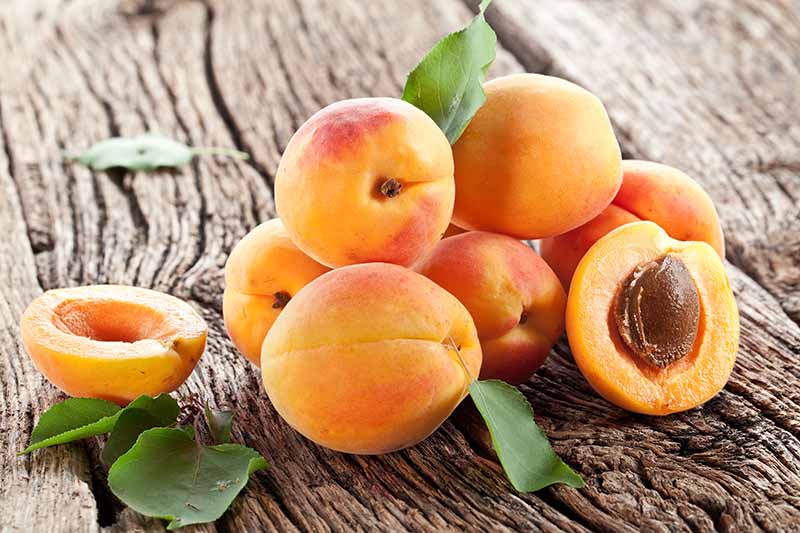
“Semi-cling” or “semi-freestone” fruits fall somewhere in the middle. Most modern varieties are semi-cling, semi-freestone, or freestone, as true clingstones are a pain to separate from the flesh and have largely gone out of favor.
Fresh apricots contain notable amounts of vitamins A and C, beta-carotene, and fiber, in addition to being a good source of iron when dried.
While a single fresh apricot contains 0.14 milligrams of iron, and a lot of water, a half cup of dried apricot halves contains 1.8 milligrams!
Just keep in mind that although many of us have the capacity to eat a lot of dried fruit in a single sitting, the more concentrated nutrients are paired with more concentrated sugars too.

According to experts at the National Institutes of Health Office of Dietary Supplements, adult women need 18 milligrams of iron every day, or 36 if they are vegan or vegetarian. Men need eight milligrams if they eat meat, and 16 if they do not.
This is because plant-based or “nonheme” iron isn’t as easily absorbed into the body as “heme” or animal-derived iron.
Eating a half cup of dried apricots a few times a week can help you achieve your iron-intake goals.
In order to bear this fruit, though, apricot trees need anywhere from 250 to 1,200 chill hours below 45°F per season, depending on the variety.
Apricots bloom with lightly fragrant white or pink blossoms very early in the spring – often in February, March, or April, depending on the location.
It’s crucial that you plant trees that thrive in your growing zone, because a late frost can wipe out a whole flush of blooms.
Under the right conditions and with appropriate pollination, the trees will bear fruit three to five months after flowering.
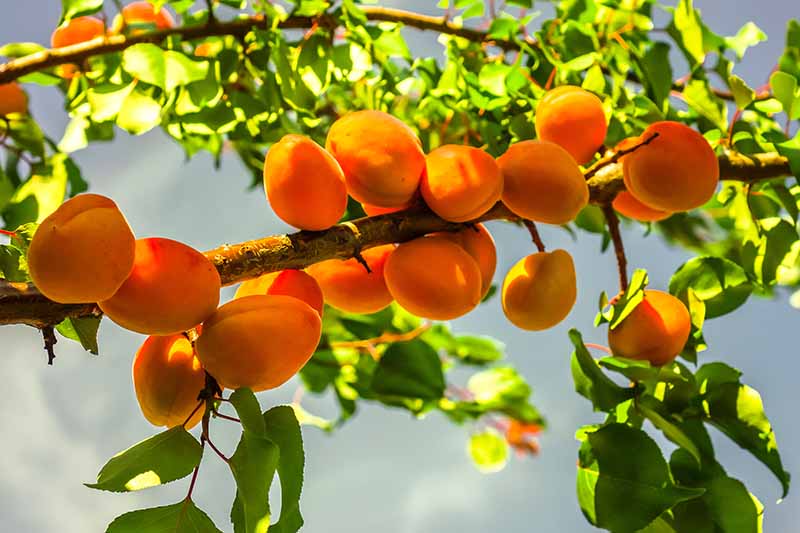
Apricots have yellow to orange skin that is sometimes blushed with light pink or red, and the flesh is white or yellow.
The fruits are small – typically around one inch in diameter – but some modern varieties produce larger fruits. The skin can either be smooth or hairy.
Standard trees grow 20 to 25 feet tall and wide. Semi-dwarfs reach 12 to 18 feet in height and spread, and dwarf varieties are much smaller, topping out at five to eight feet tall and wide.
Apricots are self-pollinating, but planting two different varieties that bloom at the same time can result in a bigger harvest.
Cultivation and History
Apricots are native to China, where they’ve been grown and cultivated for thousands of years.
Ancient traders used Silk Road routes to carry the fruit to Persia, Syria, Greece, Spain, and beyond. Spanish colonists then brought the fruits to California in the 18th century.
Ancient Greeks and many who came after them thought the fruits originated in Armenia. Gardeners and scientists held that belief for a few thousand years, leading botanists to give apricots the botanical name P. armeniaca.
I’ve always loved the Spanish word for this golden fruit: “albaricoque.” So fun to say! It has roots in the Arabic word “al-barqūq,” which means “plum.”
While the largest exporters of these fruits change from year to year, annual contenders for the top spots include Turkey, Iran, Uzbekistan, Italy, Algeria, Spain, Pakistan, and France.
Apricot Tree Propagation
Like most fruit and nut trees in the Rosaceae family, apricots are best propagated at professional nurseries via budding and grafting.
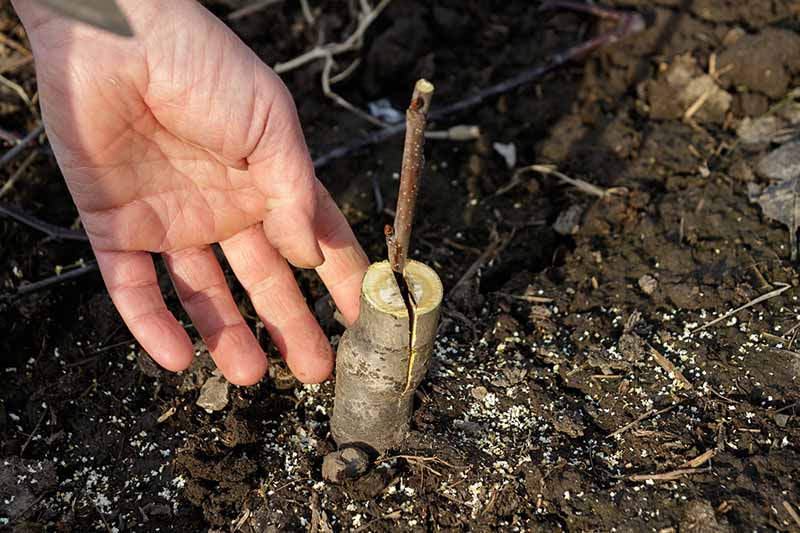
Seeds don’t grow true to the parent plant. And some of the best fruiting apricots don’t root well from cuttings, so they must be grafted onto other apricot, plum, or peach rootstocks, some of which have been cultivated to help protect the trees against various pests and diseases, like root knot nematodes and crown gall.
Since most home gardeners aren’t well versed in the science of budding and grafting, we recommend heading to your local nursery or an online purveyor to purchase the best tree for your growing zone.
Or, choose two varieties that bloom at the same time if you want extra fruit!
You may be able to get a plant to grow from seed, and this can be a fun project to do with kids. But if a big harvest of homegrown high-quality fruit is what you’re after, this isn’t recommended.
How to Grow Apricots
Standard apricots are best planted directly into the ground, but dwarf varieties are also ideal for container growing if that’s what you prefer.
To give you some options, we’ll cover both in-ground and container planting here.
Planting in the Ground
Before you dig a hole for your new tree, take a good look at your yard and find the ideal planting location.
You’ll need a spot that receives at least six to eight hours of sun every day. The soil should be loose, rich, and well-draining, with a pH between 6.0 and 7.0. We recommend conducting a soil test in your desired location before you plant.
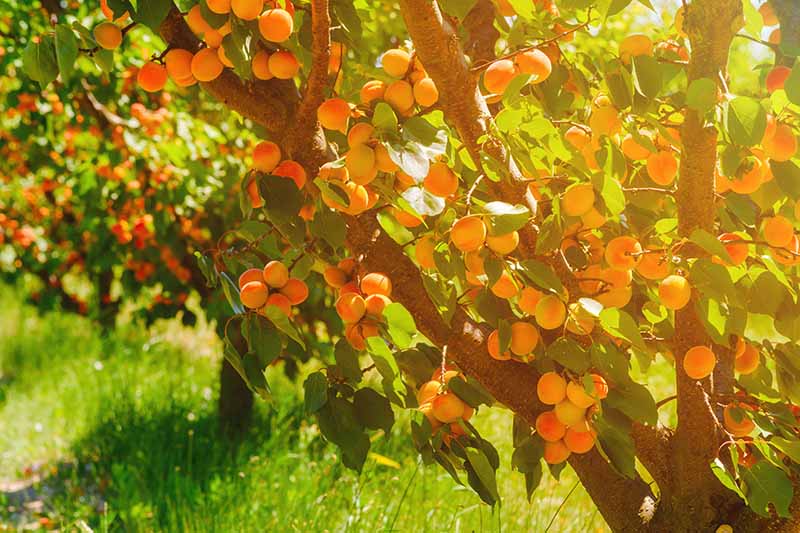
Next, make sure the area is at least 20 to 25 feet away from any other trees or full-sun-loving plants if you’re growing a standard apricot, or five to eight feet away for a dwarf variety.
Also allow appropriate spacing between trees if you’re growing more than one apricot variety.
Once you’ve picked the prime spot, you’ll need to prepare the planting hole. Recommendations for doing this vary slightly depending on the variety of sapling that you’ve purchased.
Dig a hole that’s as deep and twice as wide as your sapling’s root ball if you purchased a potted or burlap-wrapped tree.
Use a hori hori knife to carefully pry the root ball away from the edge of the container, which will make it easier to remove.
Slowly ease the tree out of its pot or unwrap it from its burlap covering. Loosen the roots with your hands, teasing them apart so that they aren’t in a tight circling pattern.
Place the tree inside the hole, making sure that the grafting scar is two to four inches above the ground.
If it’s belowground, the scion can root, causing all sorts of trouble. If a scion grafted onto a dwarf variety roots, it can grow into a full-sized tree instead of a dwarf.
Backfill with a mixture of native soil and well-rotted compost or manure. An ideal ratio is two parts native soil to one part compost.
Water thoroughly, take a step back, and smile. You deserve to enjoy your hard work!
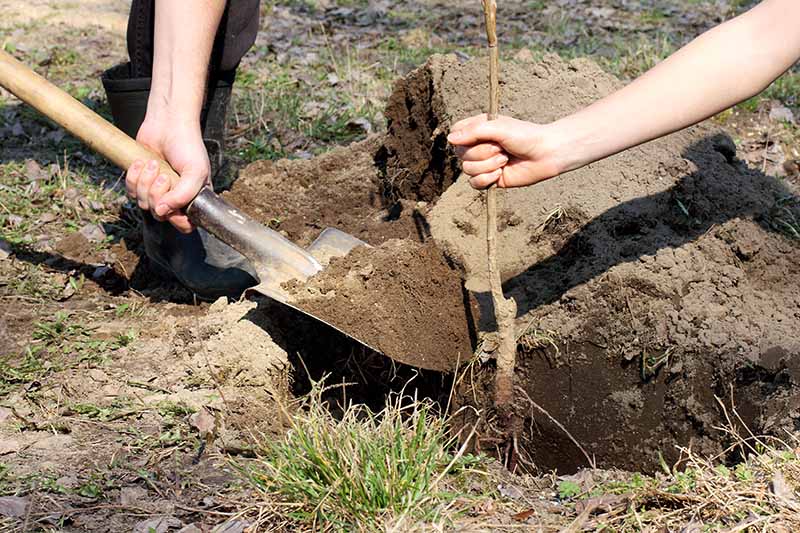
If you purchased a bare root tree instead of a potted sapling, make sure to soak the roots in a bucket of lukewarm water for two hours first, to help replenish moisture and keep them from drying out while you prepare the planting area.
Taun Beddes, Brent Black, and Michael Caron, horticulturists and fruit tree specialists with the University of Utah Extension, provide these guidelines regarding planting depth for a bare root plant:
Dig a hole that’s as deep as the length of the roots and that allows the bumpy, raised grafting scar on the trunk to show two to four inches above the soil.
Before you put the roots inside the hole, make a small mound of dirt. Place the roots inside the hole and spread them out in all directions.
Backfill with two parts native soil combined with one part well-rotted compost or manure.
Water thoroughly. If you live in an area that experiences frequent winds, you’ll need to stake the bare root tree for one year, but no longer than that.
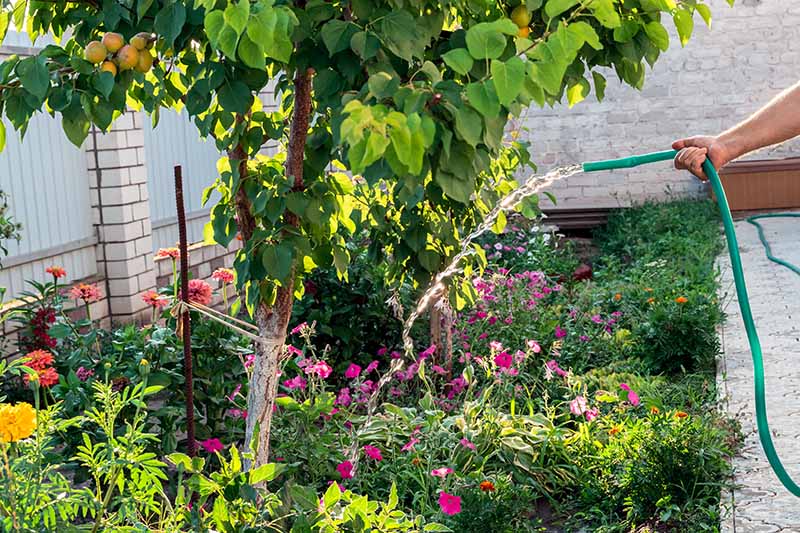
Trees that come in pots or burlap and have solid trunks and heavy root systems don’t need staking unless they’re tipping over.
Bare root trees will only need the stake until their root system anchors them firmly to the ground. Leaving a stake up for longer than a year can prevent the tree from developing an extensive root system and may result in a weak trunk.
Regardless of whether you planted a bare root, burlap-wrapped, or potted tree, you’ll want to apply a three-inch layer of organic mulch within the tree’s drip line.
This helps retain moisture, keep the soil temperature steady, and suppress weeds. Make sure to keep the mulch one to two inches away from the trunk to prevent water from collecting there and rotting the bark.
Keep the soil moist until it freezes. You don’t need to water your apricots when the ground is frozen, but the moment everything thaws in the spring, it’s time to resume your watering routine.
During thawed periods, keep the soil evenly moist for the tree’s entire first year in the ground. To check the moisture level, stick your finger one inch down in the soil every couple of days.
If it feels wet, avoid watering for another day or two. But if it feels dry, it’s time to give your tree a deep watering.
Dr. Earth Fruit Tree Fertilizer
Every spring, give your tree a dose of fruit tree fertilizer according to package directions. I love this organic, 5-5-2 NPK choice from Dr. Earth, available at the Home Depot.
Planting in a Container
Container planting is ideal for anyone with a small yard – or no yard at all! You can set your container-grown dwarf apricot tree on a sunny patio or porch.
To plant a dwarf apricot tree in a container, first choose a pot that’s at least 20 to 24 inches in diameter. Make sure it has drainage holes.
Fill it with pre-packaged soil meant for raised beds, or with one part topsoil, one part peat moss, and one part well-rotted compost or manure.
Make a hole in the center that’s as deep and wide as your potted dwarf apricot, or that is as deep as the bare roots, and that allows the grafting scar to show two to four inches above the soil line.
Use a knife to loosen the root ball at the edge of the container and tease the roots apart. Place the root ball inside the hole and backfill with your soil mix.
Add water slowly until it comes out the bottom of your planter. Cover the soil surface with a three-inch layer of organic mulch to help it retain moisture, suppress stray weeds, and keep the soil temperature even.
Be sure to keep the mulch away from the trunk, as described above.
Give your container-grown tree a dose of Dr. Earth or your choice of fertilizer every spring.
Keep your container in an area with full sun exposure, and watch your baby apricot tree grow and thrive!
Growing Tips
- Plant in a sunny location with loose, rich, well-draining soil.
- Fertilize every spring with a fruit tree specific product.
- Mulch with three inches of organic material.
Pruning and Maintenance
After your apricots are established – usually one year after planting – irrigate them about once a week, making sure the soil doesn’t dry out two to three inches down. Check the soil at least twice a week.
You may need to give container-grown trees water more frequently, as containers dry out faster than the ground does.
The best time to prune your trees is when they’re dormant. I like to prune mine in late winter or early spring when the flowers start to open but before new leaves emerge.
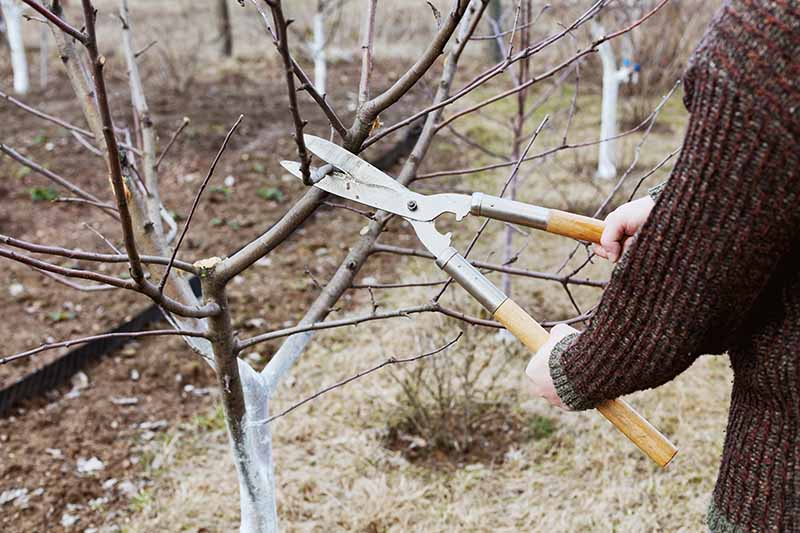
This gives them the opportunity to heal from the wounds caused by pruning as growth restarts in the spring instead of letting the wounds sit all winter, opening the door to opportunistic pests or diseases.
When you prune, begin with dead, broken, or diseased branches. Cut them off with clean pruning shears. This is a great time to remove any suckers that you find popping up around the base of the trunk, too.
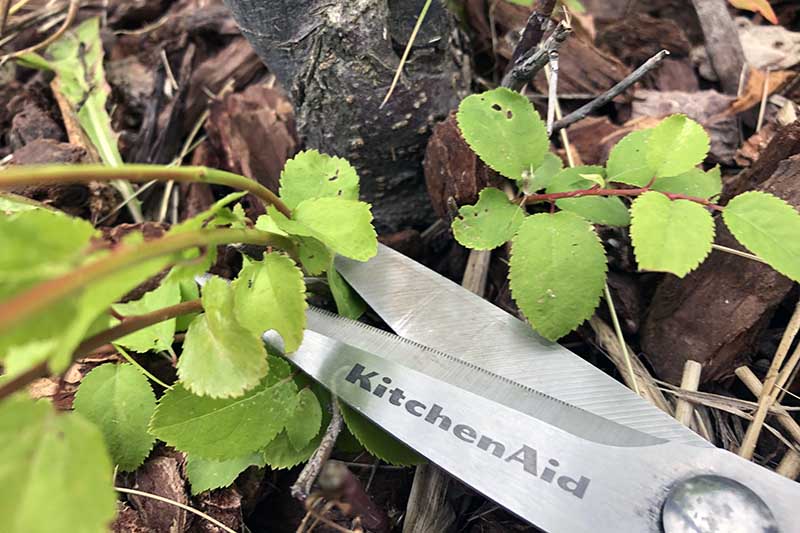
Then, prune away any crossing or inward-growing branches. Branches that cross against each other may rub up against one another, opening wounds in the bark that can let pests or disease pathogens in.
Finally, prune three or four of the branches to shorten them and maintain the tree’s shape.
Make sure you prune just above outward-facing buds. Cut at a 45 degree angle for vertical branches, or a straight 90 degree angle for horizontal branches.
Cuts like these help rainwater to run off the wound, reducing chances that the moisture will sit on the wound and cause it to rot.
Remove no more than 10 to 15 percent of the branches in any given year.
Once your apricot blossoms are pollinated and the fruits are about one inch in diameter, thin them to one every three to four inches.
This allows the tree to put more energy into growing the remaining fruits into larger, sweeter delicacies for you to enjoy!
If you’re growing dwarf varieties, which are smaller and less capable of holding heavy loads of fruit, you may need to thin more aggressively.
Apricot Cultivars to Select
There’s an astonishing range of apricot cultivars to choose from based on where you live, how much space you have available, and other factors.
Here are a few of our favorites:
Dwarf Blenheim
For rich, sweet, slightly tart fruit that makes for perfect fresh-off-the-branch eating, look no further than this semi-dwarf ‘Blenheim’ variety.
‘Blenheim’ has delighted taste buds around the world for hundreds of years, and now you can grow this semi-dwarf variety at home in a container, or in your yard.
This tree may grow to between 10 and 15 feet tall with a spread of eight to 12 feet, but you can keep it pruned to eight to 10 feet if you so desire.
Hardy in Zones 4 through 9, dwarf ‘Blenheim’ requires 400 chill hours and blooms a bit later than standard apricots, allowing the buds to miss late frosts.
It reliably sets fruit without a second tree of a different variety nearby.
You can purchase bare root, two-year-old trees that are three to four feet tall from Online Orchards via the Home Depot.
Golden Sweet
This one’s for all the sweet tooths out there. True to its name, ‘Golden Sweet’ is one of the sweetest, firm-yet-juicy apricots you can grow.
Eat it fresh off the tree in the summer, or dry it to eat during the winter to remind you of summer’s bounty.
‘Golden Sweet’ is suited to Zones 5 through 8 and is a semi-dwarf cultivar, growing just 12 to 18 feet tall with a similar spread. It requires 400 to 500 chill hours.
The flesh is, well, golden, with touches of blush on the sun-facing sides.
You can find four- to five-foot trees in three-gallon containers available from Nature Hills Nursery.
Wenatchee
Do you adore large fruits that make ideal candidates for canning and drying? And do you live in an extra-rainy area? Then ‘Wenatchee’ is the variety for you.
This semi-dwarf tree loves rain, and grows 12 to 18 feet tall with a spread of 15 to 20 feet.
Hardy in Zones 5 through 9, ‘Wenatchee’ – also called ‘Wenatchee Moorpark’ – requires 700 chill hours below 45°F. The fruits are large and tangy-sweet with yellow skin and flesh.
While it’s self-pollinating, ‘Wenatchee’ may produce double the fruit with a partner like ‘Puget Gold,’ which you can learn more about in our guide to the best cold hardy apricots.
You can find four- to five-foot trees in three-gallon containers at Nature Hills Nursery.
Managing Pests and Disease
Apricots can be susceptible to a variety of pests and diseases. Here are a few of the top issues to watch for.
Pests
The most common pests that may damage your apricot trees are cervids, aphids, and peach twig borers. Some other creatures may come to visit as well.
Birds and Squirrels
These hungry animals mostly go after fruit that is sweet, ripe, and juicy. Squirrels and birds can wipe out your crop quicker than you can pick it, if you don’t get to the fruits first.
Bird netting can help to keep birds away and makes it harder for squirrels reach the fruit as well, but if you know there are squirrels in your yard, your best bet is to pick the fruits before they turn soft and ripe. More on that in a moment!
Use netting with caution – birds can also get tangled and caught up in it, causing death or injury.
Bonide Chipmunk, Squirrel, and Rodent Repellent
You can also try using a squirrel, chipmunk, and rodent repellent like this one from Bonide, which is available from Arbico Organics.
Cervids
Do you frequently see deer or even moose roaming around your neighborhood? If so, you’ll need to protect your apricot trees from potential damage.
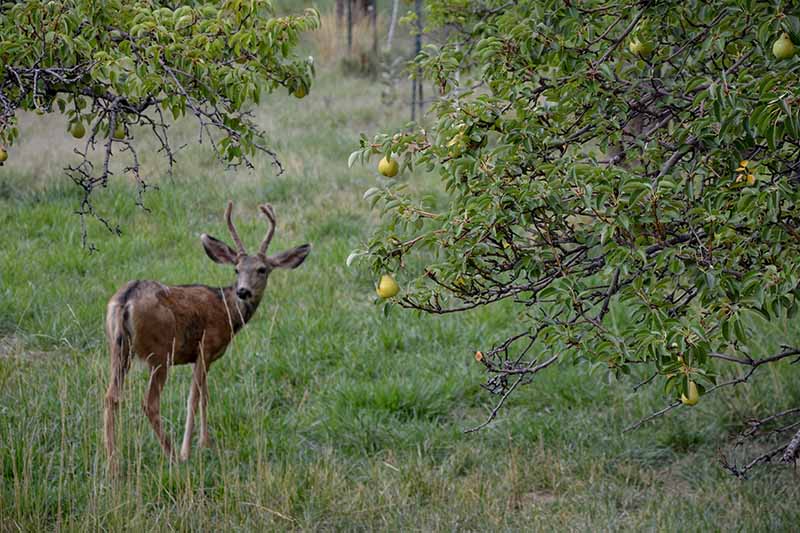
Cervids love eating the tender leaves and branches of fruit trees, especially in the wintertime when vegetation is scarce… except, perhaps, in your yummy yard.
Once the lowest branches are taller than the visiting cervids, your tree will be safe. But if you’re growing dwarf varieties, that may never happen, and you’ll need to be vigilant.
To help keep cervids away, check out our guides to deterring deer and keeping moose out of your yard and garden.
Mealy Plum Aphids
On the smaller side, you may have to deal with mealy plum aphids, Hyalopterus pruni. These green aphids are between one and a half and two and a half millimeters long, and are covered in whitish, mealy-looking wax.
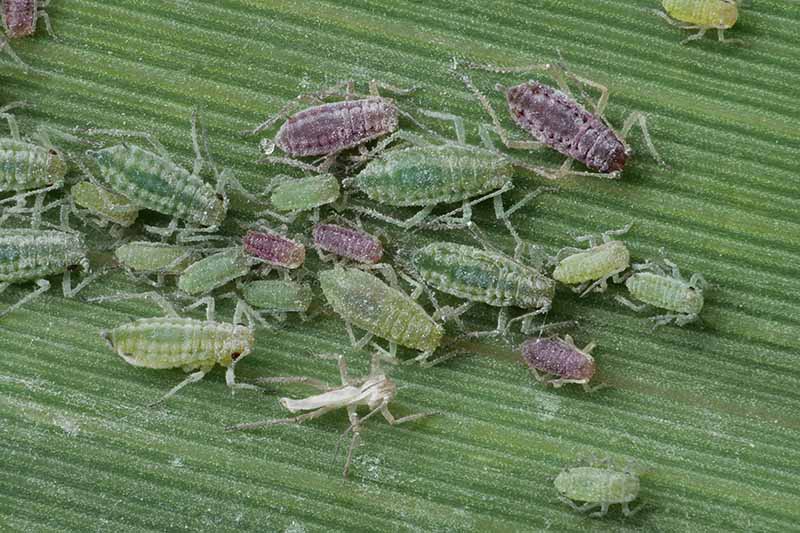
Like other aphids, they suck the juice out of the plants they infest, causing stunted growth and a general lack of vigor.
If you notice these strange-looking aphids, spray them off your apricot tree with a strong stream of water from the hose, and then apply a neem oil-based spray to the tree.
Reapply every five to seven days until you no longer see new mealy plum aphids infesting your apricot.
Peach Twig Borers
The larvae of the peach twig borer moth, Anarsia lineatella, is a major apricot pest.
The quarter-inch-long, brown and white-striped larvae overwinter “within a tiny cell, called a hibernaculum, that is located in crotches of one- to three-year-old wood, in pruning wounds, or in deep cracks in bark,” according to experts at the University of California Integrated Pest Management Program.
The borers feed inside new shoots, stunting and damaging them. They may also enter developing fruits at the stem and feed just under the skin.
Peach twig borers are easiest to manage if they’re caught early in the spring or summer, so check your trees weekly for stunted branch growth, frass left behind by the borers, and infested young fruits.
Remove affected fruits and shoots, and spray the entire tree with a spinosad-based insecticide, like this one from Monterey Garden that’s available from Arbico Organics.
Learn more about how to manage these pests in our guide to identifying and controlling peach twig borers.
Diseases
It’s never a good sign if you find symptoms of any of the diseases described below on your apricot trees.
But with early intervention, you might be able to help your tree, or in the case of the most dire diseases, you can at least stop them from spreading to other susceptible plants in your yard or garden.
The top diseases to keep an eye out for are coryneum blight, gummosis, and perennial canker. Let’s briefly review these.
Coryneum Blight
Also called “shot hole disease” due to the way it presents as little shot hole-shaped lesions on fruits, coryneum blight is caused by the fungus Wilsonomyces carpophilus.

The fungus attacks blossom and leaf buds, fruits, twigs, and leaves.
You won’t want to eat the unsightly fruits that result, but you technically can if you peel the skins off first. The fruit won’t taste as good as it should, though.
Bonide Liquid Copper Fungicide
For shot hole disease, you’ll need to remove all of the affected fruits, twigs, buds, and leaves, and spray the tree with a copper fungicide. Try this one from Bonide that’s available at Arbico Organics.
Gummosis
So, you’re out in your orchard one day when you notice a strange, orange-yellow, gooey substance oozing from the branches. You freak out. What in the world is that?
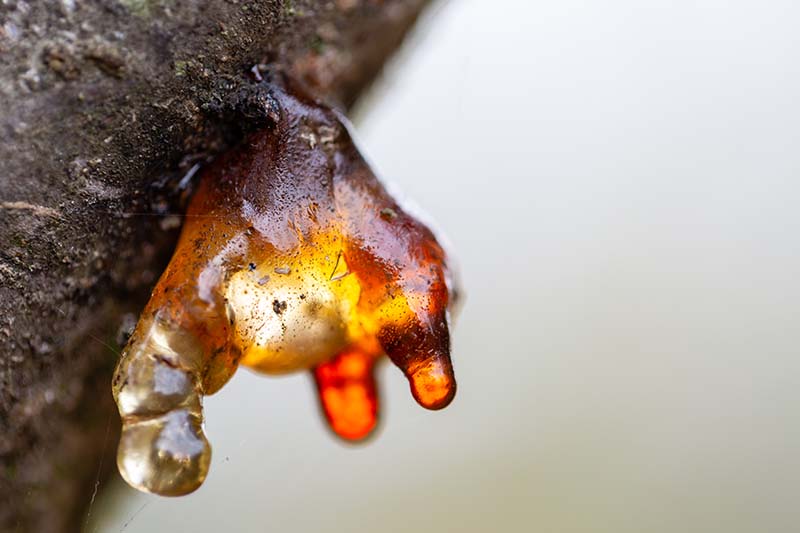
What you’re seeing is the sap “bleeding” from the tree in response to, well, a number of issues.
Any time when sap bleeds from a fruit tree like that, it’s called “gummosis.” Unfortunately, it can be difficult to discern what exactly is causing it.
The culprit could be a fungal infection resulting in cytospora cankers, subpar growing conditions, or a pest injury.
Once you know what’s causing gummosis, you can help your tree out. To learn everything you need to know about this gooey issue, read our guide to identifying, preventing, and treating gummosis on fruit trees.
Perennial Canker
Perennial canker, also known as cytospora canker, can cause gummosis, and this may be one of the first signs of this disease.
Caused by a variety of species of Cytospora fungi, “Cytospora is considered a weak parasite and invades only weakened or stressed trees,” say experts at the University of Utah Extension.
They add that the fungus “gains entry through injuries in the bark caused by machinery, sun scald, frost, pruning wounds, broken branches, mechanical shakers, and insect injury. The canker expands slowly over a period of months or years and may eventually girdle the branch, causing it to die.”
You can see why it’s called perennial canker – it simply doesn’t go away.
Ever.
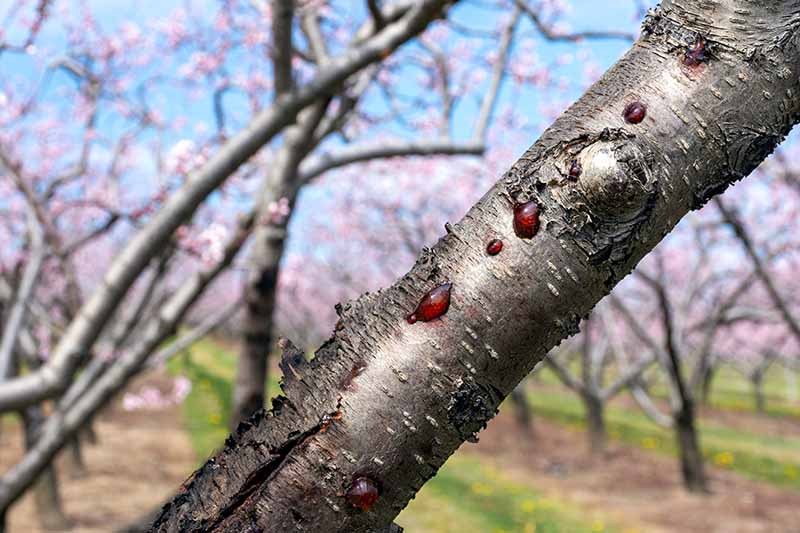
You can try to remove the affected branch and apply copper fungicide to the tree, but it’s not likely to clear out the infection.
The best thing you can do is prevent perennial canker from developing in the first place by making sure you keep your tree as healthy as possible and injury-free.
Keeping the peach twig borer under control is important, too, because this and other wood-boring insects can provide an opening for perennial canker infections.
Harvesting Apricot Fruit
Once you’ve had your tree for two to three growing seasons, it will begin producing fruit. But not a full yield.
You can still pick it, though. And by the time it’s five to seven years old, the tree will typically bear full yields.
The best time to harvest your apricots is between June and August, depending on where you live and what variety you planted.
The fruits will turn from green to yellow or orange, blushed with pink or red where the sun has hit them.
When they look like this, pick a fruit. Does it feel firm, yet slightly soft?
Take a big bite – my favorite part of the harvesting process! – and consider the flavor. Is it sweet and tangy?

If so, it’s time to harvest all of the apricots that look like the one you picked. If the fruit are still hard to the touch, sport patches of green, or don’t taste very sweet, leave them on the branch.
You can also leave the fruits on the tree until they’re soft and smell sweet, but you may end up competing with squirrels and birds, who will also be attracted to the delicious scent.
While apricots will “ripen in color, texture, and juiciness after harvest… flavor and sugar content does not increase once they are removed from the tree,” writes Sarah Browning, a horticulturist at the University of Nebraska Extension, so don’t count on them to get sweeter with time if you pick them too early.
To harvest, gently grasp each fruit with your fingers and pull. It should easily come off the branch. If it doesn’t, it needs more time to ripen.
Instead of tossing the fruits into a bucket, carefully set them down in a basket, like one of these beautifully crafted garden hods from Gardener’s Supply Company.
With a pine and maple frame and food-grade mesh, this is the perfect basket to bring your apricot babies inside safely.
It also makes washing them simple, although you’ll only want to wash the ones you intend to eat or process right away.
Store the rest unwashed in a paper bag and leave them in a cool, dry place for one to three days, or until they’re soft and sweet-smelling, indicating that they’re fully ripe.
At this point you can set them in the fruit drawer of your refrigerator for three to five days.
Preserving
Apricots are a joy to preserve. You can turn them into jam using this all-purpose jam and jelly recipe from our sister site, Foodal. I adore spreading apricot jam over freshly baked bread. Yum!
You can also slice and can them, following this beginner’s guide to canning, also from Foodal.
Or, peel the fruits, remove the pits, and then slice or cube them for freezing. Lay them on a baking sheet in a single layer.
Pop them in the freezer overnight, and then transfer the pieces to zip-top bags, where you can keep them in the freezer for up to one year.

To dry them, preheat your oven to 200°F. Wash the apricots, cut them in half, and remove the stones. Dispose of the stones where pets or kids can’t reach them.
Use your thumb to turn the slices inside out, so that the part where the stone was faces outward and the part where the skin is faces inward.
Lay them in a single layer on a baking sheet and pop them in the oven for eight hours. Let them cool before placing them in bags or glass jars.
Check them after about two hours, and if you notice condensation collecting on the inside of the container, dry the apricots for another hour.
Repeat if necessary until you do not see any more condensation.

Apricots can be dried in an electric dehydrator as well, either in slices or in the form of fruit leather.
Store your dried fruit in a cool, dry pantry in a mason jar or heavy-duty zip-top bag for up to three months, or in the refrigerator for up to two years.
Recipes and Cooking Ideas
There are so many different ways to enjoy this homegrown fruit.
Add fresh slices to a fruit salad, or eat them by themselves if you like to keep things simple.
If you love to bake, like I do, try this apricot tart with a butter crust and vanilla custard filling from Foodal. You can use apricots that you canned yourself, or slices of freshly picked fruit.

One of my favorite ways to use dried apricots is in this recipe for homemade nutty cardamom granola, also from Foodal.
There’s nothing like the surprise tang of apricot mixed in with delicious cardamom, almonds, walnuts, oats, and coconut flakes to help me wake up in the morning.
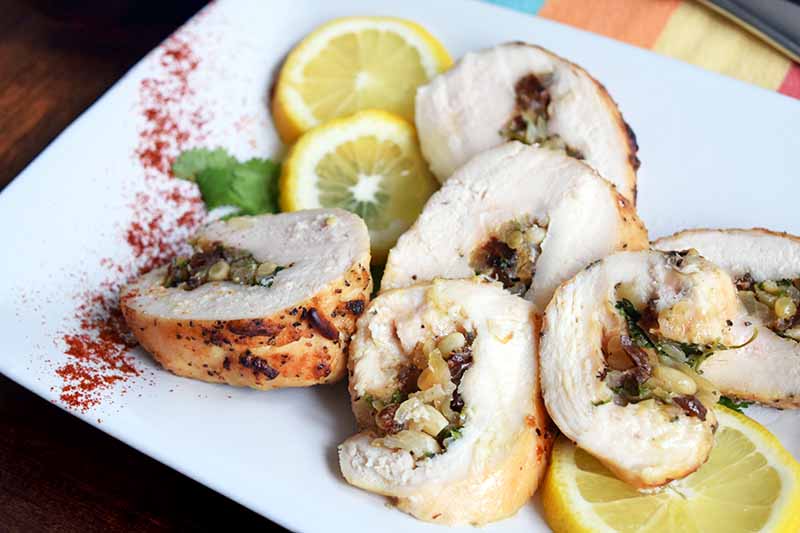
Another favorite centerpiece of a meal is this recipe from Foodal for chicken roulade. Instead of using raisins, use chopped dried apricots from your own trees!
Quick Reference Growing Guide
| Plant Type: | Perennial fruit tree | Water Needs: | Moderate |
| Native to: | China | Maintenance: | Moderate |
| Hardiness (USDA Zone): | 4-9 | Tolerance: | Heat, frost |
| Season: | Summer | Soil Type: | Organically rich, loose |
| Exposure: | Full sun | Soil pH: | 6.0-7.0 |
| Time to Maturity: | 3-4 years | Soil Drainage: | Well-draining |
| Spacing: | 8-25 feet, depending on variety | Companion Planting: | Other apricot varieties |
| Planting Depth: | Depth of container or bare root with graft exposed 2-4 inches above soil | Order: | Rosales |
| Height: | 5-25 feet | Family: | Rosaceae |
| Spread: | 5-25 feet | Genus: | Prunus |
| Growth Rate: | Moderate | Species: | Armeniaca |
| Common Pests: | Cervids (moose and deer), leafrollers, mealy plum aphids, peach twig borers, spider mites | Common Disease: | Armillaria root rot, coryneum blight, cotton root rot, gummosis, perennial canker, phony peach disease, rhizopus rot |
An Appetite for Apricots
The most amazing thing about apricots is their versatility. If you’ve got a picky eater, apricot jam or fruit leather can win nearly any soul over to embrace the wonders of apricot goodness.
Does your significant other turn their nose up at fresh fruit, but enjoys snacking on dried fruits? Apricots hit that spot, too.
They hit any spot, really.
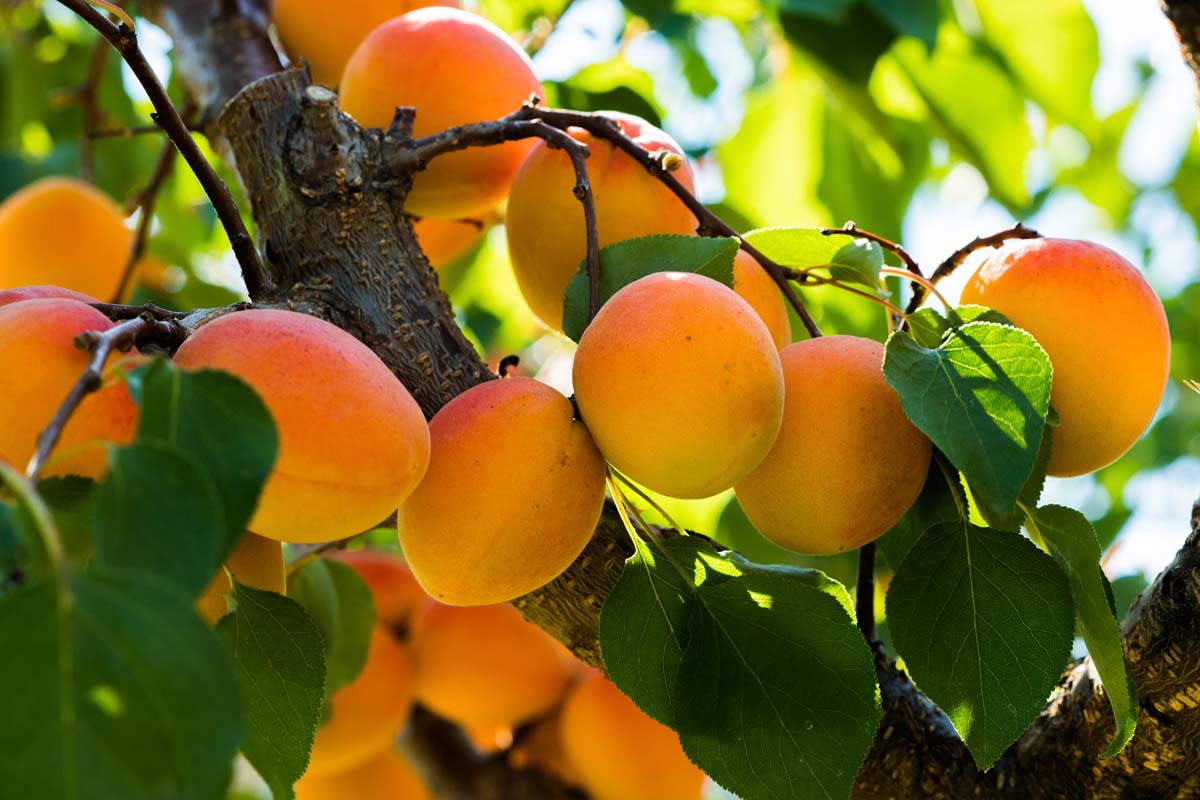
Are you ready to add apricots to your fruit orchard? Or have you started growing them already? Either way, I’d love to hear from you in the comments section below.
In the meantime, have a read of these guides to learn more about growing apricots next:
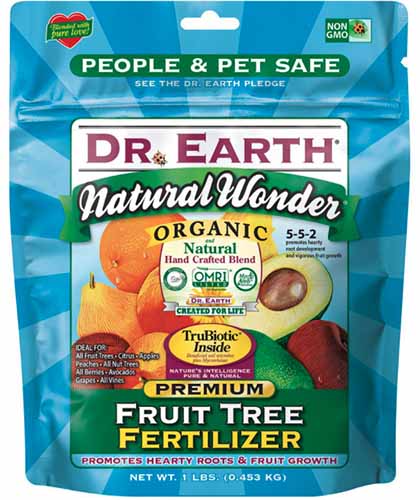
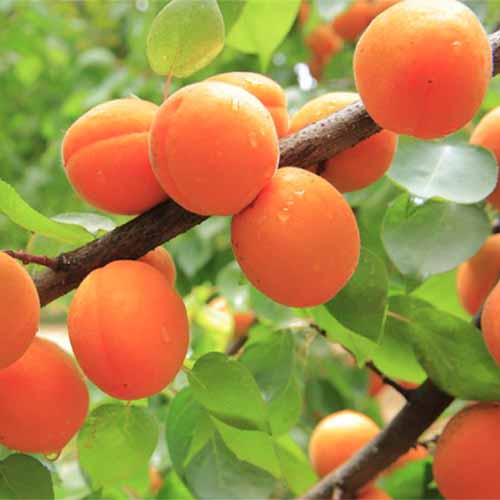
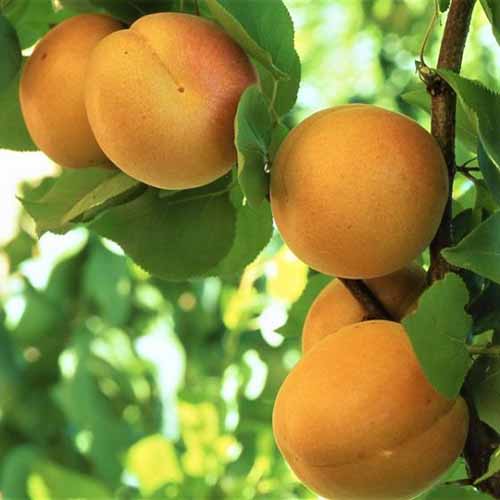

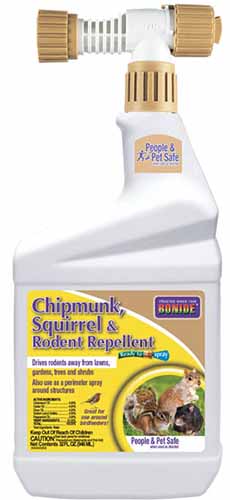
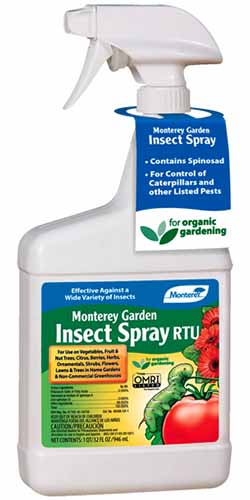
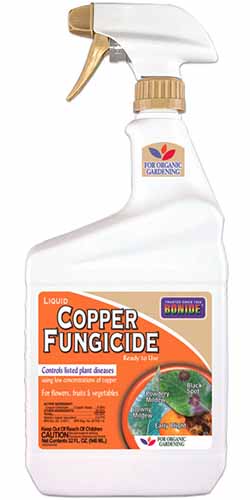

Which is the early variety of apricots & how to recognize the varieties when you looking to plant .
Moorpark is available in my country Pakistan.
I bet apricots grow really well in Pakistan! The easiest way to tell which is which is to take note of the label when you purchase a tree, to be honest. It can be difficult to tell them apart! We also have a guide to varieties here.
My apricot tree is in full leaf mode but not any fruit. Did the early storms in N. Calif. blow away my blossoms or is there something else wrong?
Hi Jo, it sounds like you’ve had a challenging winter weather-wise in California. As you probably know, apricot trees typically bloom in early April in your area and the blooms form before the leaves do. If you didn’t see any blossoms, there could be a number of causes. If your trees experienced water stress last year, that could result in a lack of blossoms. A late freeze, heavy rains that prevent pollination, or other extreme weather events could also cause trees not to bloom. Do you have any neighbors that are growing apricots? Can you see if theirs had blossoms?… Read more »
I live in Buena Park California (Near Knots Berry Farm) I have a 4 year old chinese apricott that is yet to show any blossoms, it is now April and we have had a wet spring, the tree is just started to show leaves but no blossoms, The tree looks good and has shown good growth since we planted it but now blossoms Its limbs rich up to 12 feet with lots of leaf but but no blossoms. When do they usually bloom ? I read that they ar self pollinating but dont they need to bloom before the need… Read more »
Hi Jon, ‘Chinese’ apricots flower in the early spring but later than many other cultivars. In your area, if they aren’t showing any flower buds by now, I would suspect that it won’t flower. If that’s the case, it could be several things. The first thing I would suspect is that you didn’t have enough chill hours in your region. These trees need 700 chill hours (hours below 44°F) to flower. You can contact your local extension and see how many cumulative chill hours your region experienced this year. It could also be a late freeze that killed the buds.